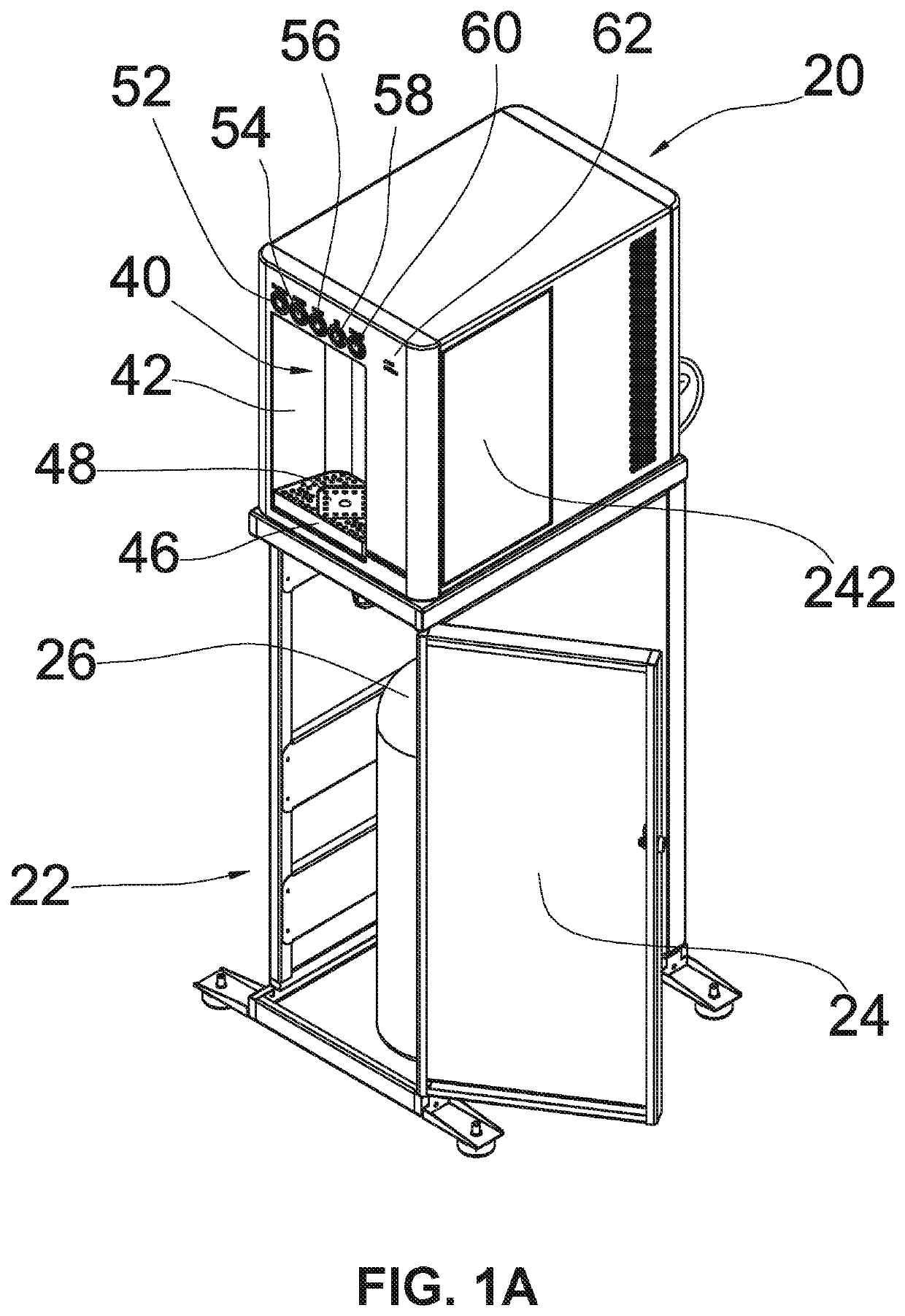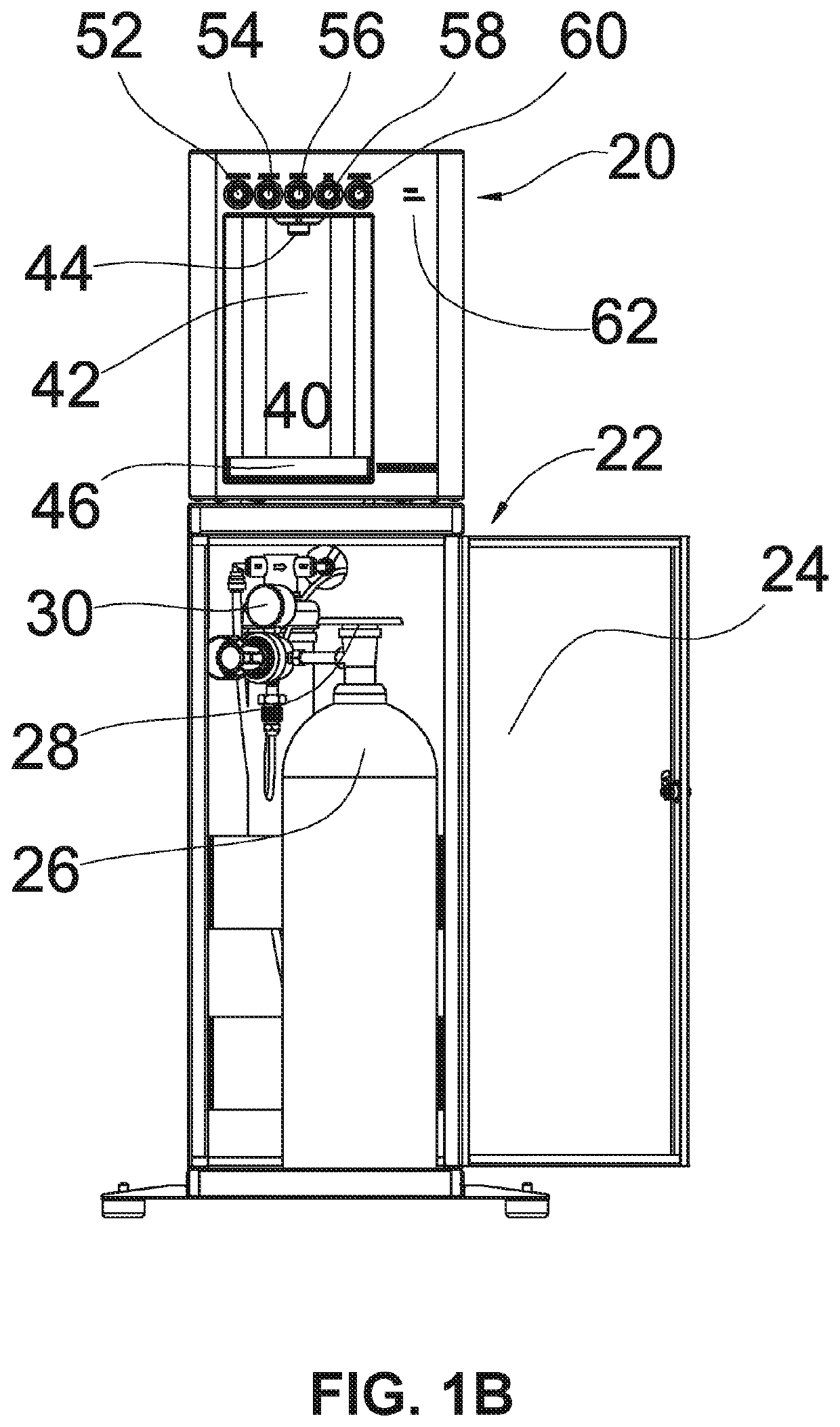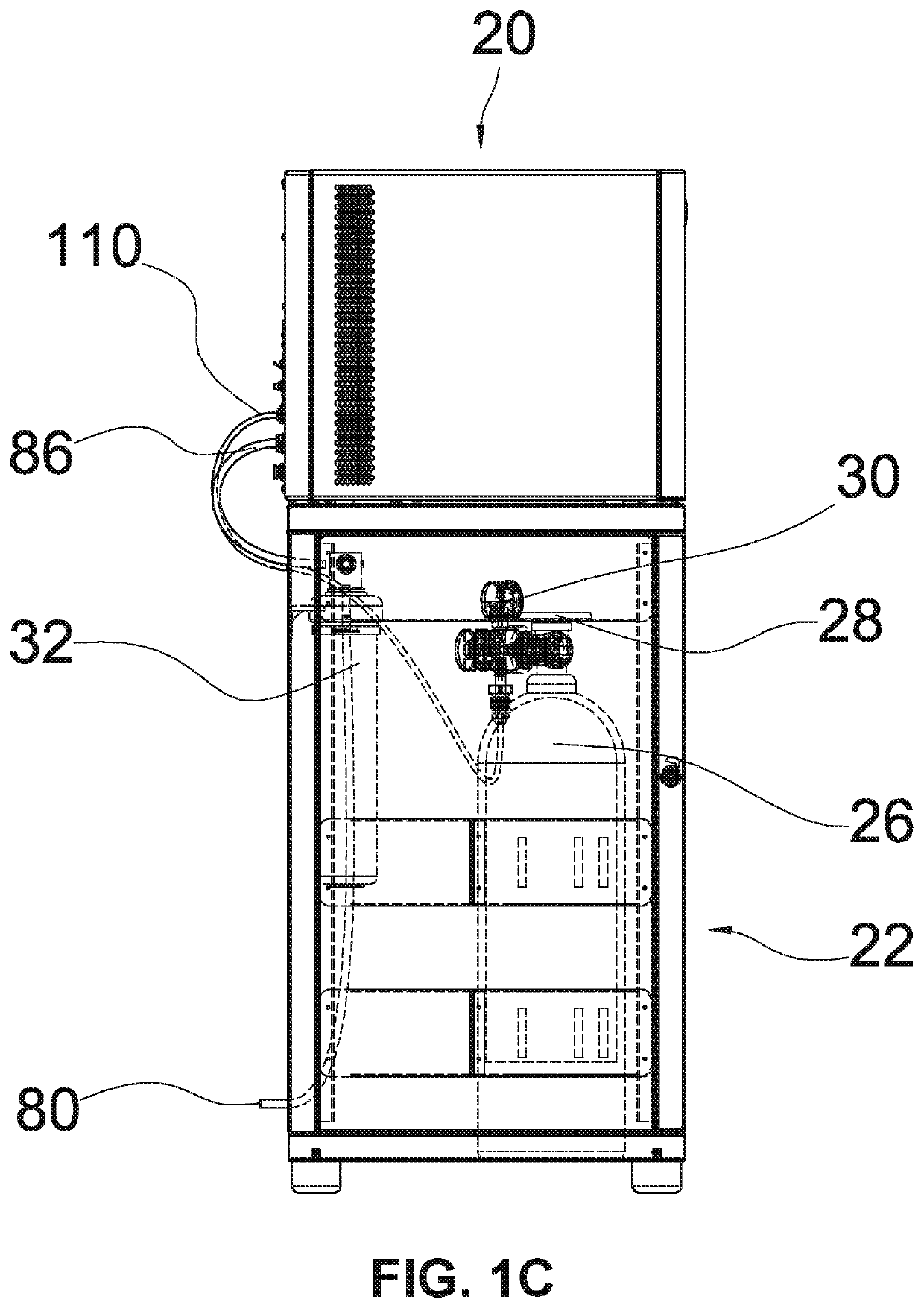Water dispensing station
a technology for dispensing stations and water bottles, which is applied in the direction of liquid dispensing, liquid flow controllers, packaging, etc., can solve the problems of reducing the energy efficiency of the chiller, splashing and overfilling errors, and increasing the overall dimensions of the chiller, so as to increase the chilled water capacity of the drink dispenser, improve the taste of alkaline water, and reduce the temperature
- Summary
- Abstract
- Description
- Claims
- Application Information
AI Technical Summary
Benefits of technology
Problems solved by technology
Method used
Image
Examples
Embodiment Construction
[0114]As used herein, the relative terms upstream and downstream refer to the direction in which fluid flows through the various parts and fluid connections. The fluid generally flows downstream from the building water line, to the spigot, and upstream in the opposite direction.
[0115]As used herein, the following part numbers refer to the following parts: 20—drink station; 22—cabinet-stand; 24—door; 26—carbon dioxide gas tank; 28—shut-off valve of the carbon-dioxide gas tank; 30—carbon dioxide gas pressure and flow regulator; 32—water filter; 40—filling / dispensing area; 42—sidewall of the dispensing area; 44—spigot / nozzle; 46—drain pan; 48—drain grate; 50—drain pipe; 51—drain exit port; 52—carbonated water button; 54—alkaline water button; 56—chilled water button; 58—hot water button; 60—auto-fill button; 62—indicator lights; 64—controller; 68: dotted line simulating the housing of a drink station; 70—compressor; 72—freezer expansion line; 74—chilled water reservoir; 76—insulation; ...
PUM
 Login to View More
Login to View More Abstract
Description
Claims
Application Information
 Login to View More
Login to View More - R&D
- Intellectual Property
- Life Sciences
- Materials
- Tech Scout
- Unparalleled Data Quality
- Higher Quality Content
- 60% Fewer Hallucinations
Browse by: Latest US Patents, China's latest patents, Technical Efficacy Thesaurus, Application Domain, Technology Topic, Popular Technical Reports.
© 2025 PatSnap. All rights reserved.Legal|Privacy policy|Modern Slavery Act Transparency Statement|Sitemap|About US| Contact US: help@patsnap.com



